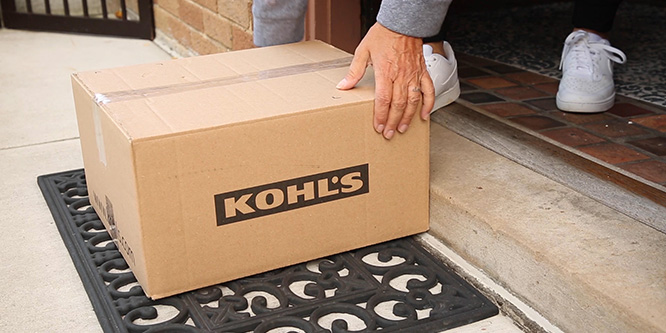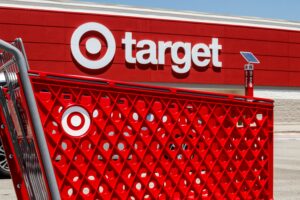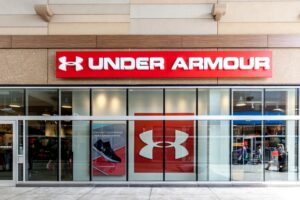
Photo: Kohl’s
August 22, 2022
What should the free shipping threshold be?
Kohl’s said its online sales in the second quarter benefited from higher conversion rates, driven largely by a move to lower its free shipping threshold on order size to $49 from $75.
On the retailer’s analyst call, Michelle Gass, CEO, said the company made the threshold reduction “to be more competitive.”
Among competitors, Macy’s currently offers free shipping with a minimum $25 purchase, down from as high as a $99 threshold in 2019. Free shipping kicks in at $49 at Belk and Boscov’s, $75 at JCPenney, $89 at Bealls and $150 at Dillard’s. Among upscale stores, shipping is free with no minimums at Neiman Marcus, Nordstrom, Saks and Von Maur.
The free shipping threshold is $35 at both Walmart and Target. Amazon in 2017 reduced its requirement for non-Prime members to $25 from $35.
Among more niche sellers, free shipping starts at $35 at Best Buy, $39 at Bed Bath & Beyond, $40 for Barnes & Noble, $45 at both Home Depot and Lowe’s, $50 at L.L.Bean and $65 at Dick’s Sporting Goods.
Formulas have been developed to calculate the free shipping threshold by measuring the degree to which the cut-off order value motivates consumers to add more items or abandon their shopping carts. A Wharton study estimates shoppers will spend 30 percent more to qualify for free shipping.
For many retailers, the calculation has to take into account loyalty and credit card programs that use free shipping as an incentive. Kohl’s credit card holders earn free shipping without any minimum order required if they spend at least $600 or more annually. At Old Navy, shoppers earn free shipping on orders over $50 only when joining the free Navyist program.
Some membership programs, such as Amazon Prime ($139 per year), Walmart Plus ($98 per year) and Barnes & Noble’s B&N Membership ($25 annually), employ free shipping as a primary perk.
Waiving shipping fees has also been used as a promotion tactic during holiday selling periods. Finally, retailers may lose some benefits of in-store pickup if a low free shipping threshold acts as a disincentive.
- Kohl’s (KSS) Q2 2022 Earnings Call Transcript – The Motley Fool
- How to Offer Free Shipping (& How to Calculate Your Free Shipping Threshold) – The Fulfillment Hub
- How to Take the Guesswork Out of Your Free Shipping Threshold – RJ Metrics
- How the Offer of ‘Free Shipping’ Affects On-line Shopping – Wharton
Discussion Questions
DISCUSSION QUESTIONS: How should the order size threshold for free shipping be determined? Should other factors (e.g., membership or credit card perks, potential free shipping promotions, incentivizing in-store pickup) count most in calculating the threshold order size?
Poll
BrainTrust
Mark Ryski
Founder, CEO & Author, HeadCount Corporation
Ryan Mathews
Founder, CEO, Black Monk Consulting
Brandon Rael
Strategy & Operations Transformation Leader
Recent Discussions







This is a complex determination process. Because there are so many factors involved the threshold dollar amount is not something that can be plucked out of the air. Whatever calculation retailers use to determine the threshold, the result should be a profitable transaction for the retailers and attractive enough to the customer. And therein lies the quandary.
Good points Bob! The reality is that retailers need to make decisions that will protect margins and profitablity. The gross margins on products need to be able to absorb the shipping costs otherwise retailers need to charge shipping fees or adjust their pricing models to reflect the shipping costs. As Bob mentioned, this can cause a quandary, when customers expect free shipping.
Ultimately, the order size threshold for shipping is individual to the retailer based on their costs and competitive dynamic. Competitive pressure is what’s driving order price and free shipping and retailers must respond to competitive pressure or risk being seen as uncompetitive. Creating programs that include credit card and membership perks in the free shipping calculation may be able to blunt the margin impact and create some differentiation, but it’s all an attempt to preserve margin which is very hard to do.
The costs of servicing online orders have soared, not least because gas and diesel prices are extremely high. However retailers have trained consumers to expect free or no-cost delivery so the market won’t bear high shipping fees. And there are plenty of players in the market, like Amazon, who offer low or no cost delivery. However all of this is taking its toll on the bottom line and that toll is growing. That’s why some retailers are taking action in areas like charging for returns – something that helps them, but doesn’t add too much friction to the sales process.
I believe customer loyalty should be the determinate of shipping costs. If you use the 80/20 rule where 20 percent of your customers generate 80 percent of sales, then those customers should have free or no-cost shipping. And for most retail categories, the spend amount should not exceed $50. Getting a handle on returns should also play into the calculation as returns are by far the biggest margin erosion component. Retailers need to figure out how to improve reverse logistics. Serialized RFID could help justify lower free-shipping thresholds, because it optimizes speed and accuracy and reduces fraud.
Is the shopper using shipping costs to decide where to purchase or whether they want delivery or BOPIS? In other words, retailers will want to weigh the trade-off of shipping threshold against driving traffic inside their stores. I would hope that retailers are doing major testing of various options and messages. Free shipping can be a buffer to inflationary pricing, too. But what happens when inflation cools off?
I don’t think you can develop a one-size-fits-all formula for calculating free shipping thresholds. As several others have commented here, it’s complicated. Numerous factors affect the decision, many of which are related to dollars and cents, others are related to customer relationships and still others are related to brand expectations. Making decisions like these are when CMOs earn their keep. I might suggest, however, that everyone be wary of subscription fee burnout when evaluating membership as a vehicle for offering free shipping. Just ask Netflix about that one.
Even if I don’t think I am paying for delivery, I indeed am. However the retailer using it as a tool to incrementally increase the order size or to lock in loyalty, as done by Amazon, is smart.
As noted in the commentary, a retailer should understand how to measure the process and will likely find the right level. Determining that level is not a “shot in the dark.” The data exists.
Like the cat that tasted the fresh tuna there is no going back to canned tuna. The same with free shipping. However the economics require a balance between shipping costs and profitability. The key is how to set and communicate this balance to customers. Plus, the opportunity for free shipping with add on purchases potentially makes the shopping experience a fun and creative process.
I’m sorry but retailers have walked themselves into a box on this one. Shipping costs/qualification levels can only go down. Taking them up will cause consumer backlash. Since they can only go in one direction the answer is that – in the end – any order, no matter how small, will qualify for free shipping. Think about it. Struggling forms will have no choice but to meet whatever ceiling large players dictate and large players can afford to play a long game, forcing out lower capitalized competitors, and eventually floating prices back up to make up for margin losses. If Walmart, Target, and Amazon suddenly dropped the qualification level down to say $15 how could Kohl’s et. al not try to match it? Is it an expensive strategy? Of course, predation always is. But in this economy you can’t start changing the rules on consumers, unless you change them in their short-term favor.
In reality there should be no free shipping. An online order is a luxury good. However that horse has left the barn. The issue is far more complex than a single financial calculation. In the case of Kohl’s, history shows that customers converted because of incentives will always have lower lifetime value and often may never buy again from that retailer. Kohl’s should be cautious.
In the race to mitigate the last mile and with the market positioning free shipping as a more commonplace customer experience, retailers must determine a profitable supply chain fulfillment operating model to drive growth. It’s a losing sum game for retailers to offer free shipping on all items, as there will be a negative impact on what is an already margin-compressed situation.
Via the power of data and analytics, retailers have an opportunity to establish a more predictable, consistent, transparent, and reliable supply chain fulfillment model that drives the optimum price and category levels for free shipping to kick in. Free shipping should not come at the detriment of increasing the cost to serve. Instead, it should be an added benefit to incentivize customer loyalty and brand affinity without negatively impacting revenues and profitability and diminishing the brand equity.
In many, if not most, consumers’ minds, free shipping went from a nice-to-have to being an expected part of the purchase process. The only question was how large their purchase had to be to qualify for it.
The issue for retailers was how to meet that expectation profitability. There is no one-size-fits-all answer. Every factor from the products’ margin to the cost of shipping and the lifetime value of each individual customer must be weighed.
Free shipping is effectively a part of the price of the product. At the end of the day it’s just another fee that is added. For retailers, they may be able to get away without including the shipping price into the total, but if this regularly exceeds that of competitor prices, the customer will buy elsewhere — with lower prices. What consumers have already demanded is shipping price inclusion before committing to purchase, requiring shipping addresses to be provided earlier, and in turn causing abandonments when the shipping price pushes the cost above consumer thresholds. If it’s not a line item on the order total, it’s part of the price.
Let’s cut to the chase: we’re asking the question backwards: we should be asking “what should be the threshold for charging?” and the answer is “Zero.” Won’t happen … for now anyway, but maybe if we keep repeating it, someday it will.
Retailers need to cover costs, but retaining loyal customers and incentivizing customers to purchase are also important. Given difficult economic times, customers may not want to spend a lot in one month, but free shipping might keep them loyal. Testing different levels for free shipping is a good strategy to use since this will be a different decision for each retailer.
Free shipping is a slippery slope, especially when you’re known as a discount retailer. Between all the coupons and promos, it’s often a race to the bottom. Kohl’s should absolutely require something in return for the perk. Credit card holders or rewards members would be the most valuable customers to target.